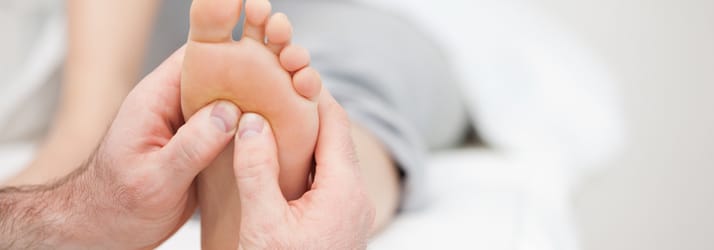A Quick Guide to Trigger Points | Autumn 2004 Newsletter

Autumn Greetings,
This letter is about “Trigger Points”. There are more then 600 muscles in the body doing a variety of tasks. Any one of these can develop a trigger point. Healthy, pain free muscles move within a full range of motion. Pain and stiffness may often be the first signs of a problem. The graphics below show two trigger points that can cause headaches. The stippled grey area is the referral zone of these common trigger points. Recovery may require an evaluation and hands on chiropractic &/or massage treatment . As always we are here to provide effective pain relief and enhance your innate healing capacities.
What is a trigger point?
Trigger points are described as an area of hyper-irritability in a tissue that, when compressed gives rise to referred pain and sometimes numbness or
tingling or other symptoms. The spot may feel like a nodule when lightly pressed. Many of the common trigger point locations and referral patterns have been mapped on the body. Most trigger points occur in soft tissues like muscles or tendons but they have been reported in ligaments and even on the surface of bones.
What causes a trigger point?
Damage to muscles can come from many sources all of which may result in trigger points. Trauma, postural strain, overuse, emotional tension, poor
nutrition, too much or too little exercise are just a few of the common causes of trigger points.
How are trigger points diagnosed?
Evaluation including a look at past health problems, recent injuries, work and daily habits will often highlight classic patterns that lead to trigger points. A physical exam including a postural analysis, joint and muscle function tests will help reveal any tissues involved and rule out other causes of similar pain. Muscles can be checked directly for trigger points by applying direct pressure onto areas trigger points are commonly found.
How are trigger points treated?
Therapies for acute trigger points can include massage, electrical muscle stimulation, hydrotherapy (heat or ice) and chiropractic manipulation. A combo of therapies can ensure a quicker and more long lasting recovery. Long term prevention strategies include identifying and eliminating habits or positions that can cause recurrence.
“Self help Tools for Trigger Points”
- Play detective for a day:
Identify those positions or activities that perpetuate or cause trigger points. Repetitive or prolonged static activities are common culprits. If
possible take appropriate actions to remedy identified problem areas. - Diet and supplementation:
Some evidence suggests that a calcium deficient diet may contribute to
trigger points. A good multi-mineral, vitamin supplement should include adequate calcium and magnesium. - Regular exercise:
Get up and get some blood flowing. We’re made to move. By the same token overdoing exercise can deplete your body of important nutrients. You all know I’m a fan of yoga as a balanced approach to stretching, strengthening and flexibility. - Home remedies:
“Thumb therapy” may relieve the trigger point on the spot. Press into the tender spot with the pad of your thumb. Use progressive pressure until the pain diminishes. A 10-15 minute application of an ice pack can often relieve acute trigger points.
OFFICE HOURS
Monday
9:00am - 12:00pm
2:30pm - 6:00pm
Tuesday
Closed
Wednesday
9:00am - 12:00pm
2:30pm - 6:00pm
Thursday
Closed
Friday
9:00am - 12:00pm
2:30pm - 6:00pm
Saturday & Sunday
Closed
Milwaukie Wellness Center
5111 SE Lake Road Suite 1
Milwaukie, OR 97222
(503) 659-5900


